Aegean Adventures: Details from three weeks spent in Greece
/The famous ancient statues overlooking modern Athens
Greece is one of those places that I read a lot about in my school books growing up. The mythical stories of gods and goddesses - accompanied by photos of ancient temples and marble statues - left a lasting impression on me. As I grew older, I was also drawn to the gasp-worthy images of crystal blue waters and quaint, white-washed villages. It seemed like one of those places that you needed to see in person to believe it was even real.
One of the many beautiful beaches on Milos
When I decided to travel to Greece for a few weeks in September, I realized how little I actually knew about the country. For example, I found out that the population of Greece is more than 10 million people, and over 40% of the population lives in the capital of Athens - a fact that really surprised me. I also learned that Greece has more than 2,000 islands, of which approximately 170 are populated (the largest being Crete). When it came to crafting a travel plan, I definitely had my work cut out for me!
After much research, I settled on an itinerary that I thought would allow me to see some of the highlights of Greece while not being too rushed. During my three weeks, I spent a few days in Athens, then headed to the Cycladic islands (they are the group of islands closest to Athens), allowing 5 days +/- on each of the islands of Paros, Milos and Crete, plus 2 full days in Santorini.
Medusa Restaurant - Hanging octopus and tables on the water’s edge. A must in Milos!
In retrospect, I think my plans worked out well, although I would have been happy to spend a few more days in Athens. In talking to other travelers I met along the way, I learned that Sifnos was a good island for trekkers/walkers, and that Naxos was another island in the Cyclades worthy of checking out. Maybe next time :-)
I traveled to Greece in the beginning of September, and the weather while I was there was absolutely gorgeous. In fact, it was almost too sunny and hot during my days in Athens - it was never even cloudy! There were still plenty of tourists in some places, but far fewer than during the summer months. My recommendation would be to arrive a few weeks after I did: you will likely still have plenty of sunshine, but the intense heat will have abated and the crowds will have lessened even further.
I loved Greece! If you are looking for a trip where relaxing and eating good meals are your top priorities, I highly recommend it. Most of the time it was amazing, really clean and exceptionally beautiful. There were some down moments, as with any trip, but honestly those were few and far between.
One of many white-washed churches in Greece: this one was in Parikia, Paros
THE POSITIVES
The liveliness of Athens
I arrived planning to dislike Athens. I was told, and had read, that it was gritty and dirty and that, aside from the ancient sites, there wasn’t much there. What I found was something different - lucky me!
At the Ancient Agora (meeting place)
The Acropolis of Athens is an ancient citadel located on a rocky outcrop above the city of Athens and contains the remains of several ancient buildings of great architectural and historic significance, the most famous being the Parthenon. Maybe a part of my positive experience in Athens was due to the fact that I stayed in the heart of the historic district known as Plaka, and was very near to the Parthenon. Every day when I left my hotel (which had a view of the acropolis from the roof deck restaurant, by the way!!!) I had to only walk for a few minutes before I was in a pedestrian zone that wound it’s way around the most amazing sites in Greece!
I adored the cobblestone streets, the cafe life, and the general vibe in Athens. Yes, the city isn’t all polished and neat, but that I think is one reason I enjoyed it so much. Athens doesn’t pretend to be something that it’s not. Like any big city, it has it’s good sections and it’s bad sections, but the areas where I spent more of my time - and where all the best things are to explore - were full of life. There were so many people out and about: sitting at restaurants enjoying some tasty food or a cup of Greek coffee; strolling around the shopping district, and generally enjoying their holiday. Even jet-lagged, I enjoyed every minute and wished I had more time to spend in Athens.
The adorable little villages on the island of Paros
I LOVED PAROS!!! After I had organized all of my arrangements, I received my latest issue of Travel & Leisure magazine and found out that Paros was voted the #1 island in Europe by it’s readers. After having visited, I can fully understand why (by the way, Santorini was #4, Crete #5 and Milos #6 - Greece is a reader favorite for sure :-)
Naoussa, Paros - as seen from the harbor
Paros is the third-largest Cycladic island, but it is actually rather small. Despite it’s compact size, I believe it really pays to rent an ATV, scooter or car. I believe that it is possible to travel around on public busses, but to fully explore the island and get to some of the more remote beaches, etc. a vehicle is necessary. I rented a small car, which allowed me the freedom to head where I wanted, when I wanted. I based myself in an AirBnB in the village of Parikia, which was a great decision. This little village is exactly what you think of when conjuring up images of Greek island life…an enchanting place full of narrow paved alleys, medieval archways and white washed building cascading with flowers.
Like in most places, the best time to photograph is in the morning, when the majority of tourists are still sleeping. It’s during these few hours that you can really feel, smell and see villages come to life. Staying right in Parikia made wandering around a breeze. Getting lost in the labyrinth pathways each morning was such a joy!
Early one morning I ventured up to the other main village on the island, Naoussa. The port here is definitely less busy than in Parikia (which is where all the ferries arrive). There were lots of locals enjoying an early morning coffee, and the harbor is a great place for photos.
In the middle of the afternoon, many of the shops and restaurants actually close for a good, southern-European style siesta, but at night (around 5 or 6 pm) the streets came to life again and many places stay open until 11pm or midnight. At night, the alleyways were full of tourists, with so many outdoor restaurants, cute boutiques and cafes.
The beautiful beaches of Milos
Volcanic Milos has been called the most dramatic of the Cyclades, and it pays to explore this island both by land and by sea. Like Paros, the island of Milos has white-washed villages, but here many sit high atop dramatic cliffs. I rented an ATV while on Milos and it was the best decision ever. What a fun time I had riding around on that thing! The ATV was perfect for exploring the many hidden beaches all around the island.
Milos is home to one of the most unique beaches I’ve ever seen: Sarakiniko. At this particular spot, crystal clear blue waters lap against a moonlike white landscape with cliffs and ocean caves. The scale is massive and the formations otherworldly. It’s the most popular place to visit on Milos, and despite all the people there, it was still an amazing place to see.
Amazing Sarakiniko beach …with people in the image for scale!!
One of the other treats on Milos were the little fishing villages scattered all around the island. Klima is the most picturesque and is definitely worth visiting to see the “syrmata” (fishermen houses that are carved into the rocks and have bright colored wooden doors.) I visited Klima three times, each at different times of day, and my favorite was in the morning when I found a group of local Greek grannies going for their daily swim! Very nearby Klima you can find well preserved 1st-century AD catacombs, including the place where the Venus de Milo was discovered. There is also a Roman theatre with an amazing view over the Aegean sea
Locals out for an early morning swim in the fishing village of Klima
THE NEGATIVES
The crowds in Santorini
Wow. Santorini is a stunner of an island!!! “Formed” by a volcanic eruption in the 16th century BC, it’s hard to describe - or even capture in photos - how high the cliffs are, how stark the whitewashed houses look against the dark rocks, how blue the sky looks.
Santorini - being gorgeous
The small towns of Santorini are perched on the top of the cliffs, with houses built one on top of the other - they literally tumble down the mountain side. All of this sits above an underwater crater (caldera) and the bluest water, making for a unique and striking setting. Santorini looks like a place that isn’t real, and really is one of those islands that everyone needs to see at least once in their life.
And because of it’s amazing beauty, Santorini has become the most popular island in all of Greece. It is now estimated that 2 million+ visitors come to Santorini each year - many of them on the massive cruise ships that dock off shore. The significant increase in the number of tourists to Santorini resulted in the construction of a cable car that transports visitors from the old port (where most ships dock) to the village of Fira (aka Thira), which is crammed with tourists shops. The crush of people is felt all day long, but particularly at dusk, given Santorini’s epic sunsets. Oia, the stunning settlement high atop cliffs on the island’s northern tip, is where all the coaches descend, dropping off even more people who want to glimpse the sunset in this most famous place.
On the advice of friends, I stayed at a cliffside hotel in the village of Imerovigli - which sits ideally between Fira and Oia. The position of the village provides a clear view of the caldera, and because there is no real shopping to speak of, it is blissfully less crowded.
Darkness descends on Santorini, Greece
When I arrived in Santorini I spent the afternoon with a photographer in some of the lesser known parts of the island - and those hours were great. As a well seasoned traveler and photographer myself, I know that the best time to explore somewhere so popular is early in the morning, and that is exactly what I did. It is possible to walk from Imerovigli to Oia, along a cliffside path that is full of pleasant surprises and only a few other people. I did this walk one morning, and once I reached Oia, I took photos, walked past the windmills and down to the water, back up, and then took a bus back to my hotel. I was overwhelmed and anxious to flee back to the refuge of my cliff side hotel!
I have loads of images from Santorini, as it’s one of the most photogenic places I’ve been.
See some in the slideshow below!
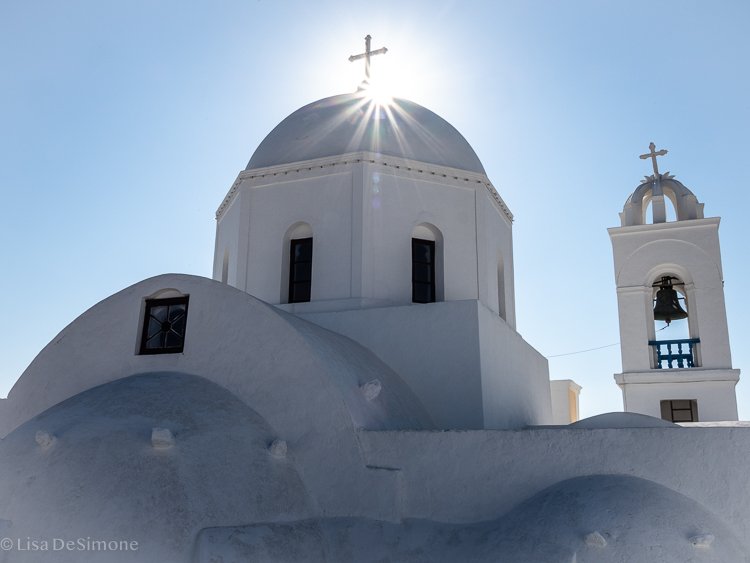
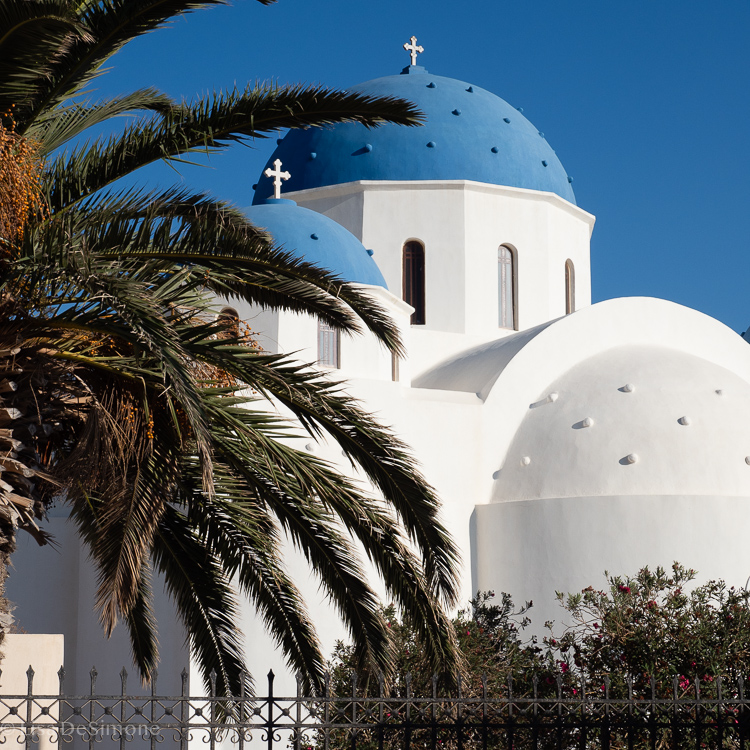
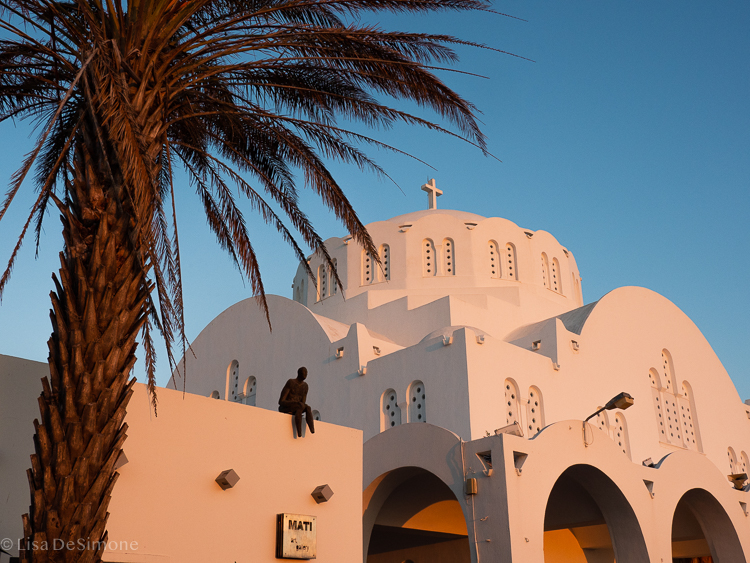
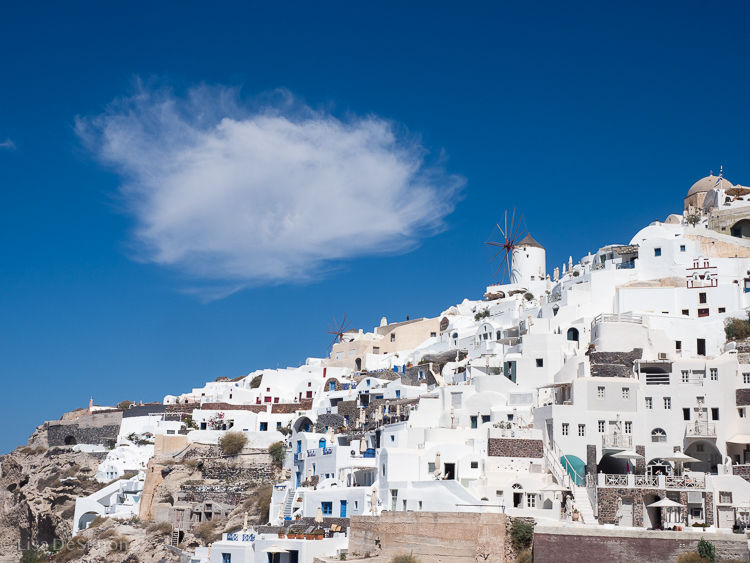
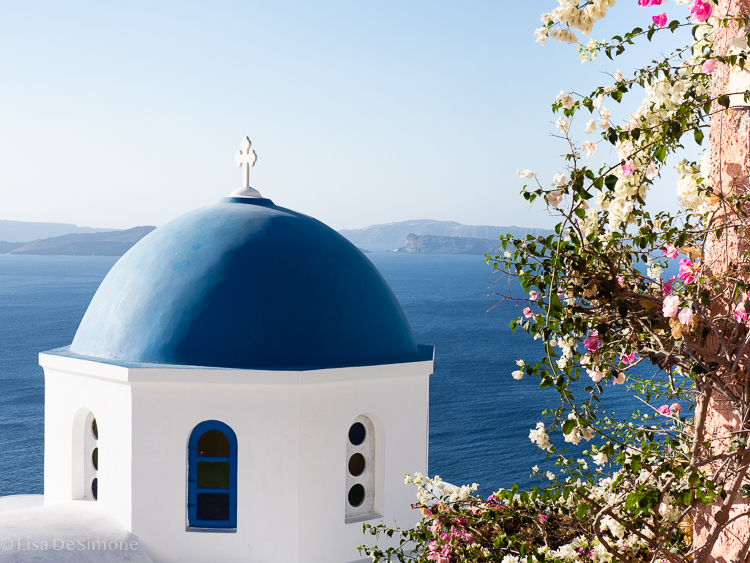
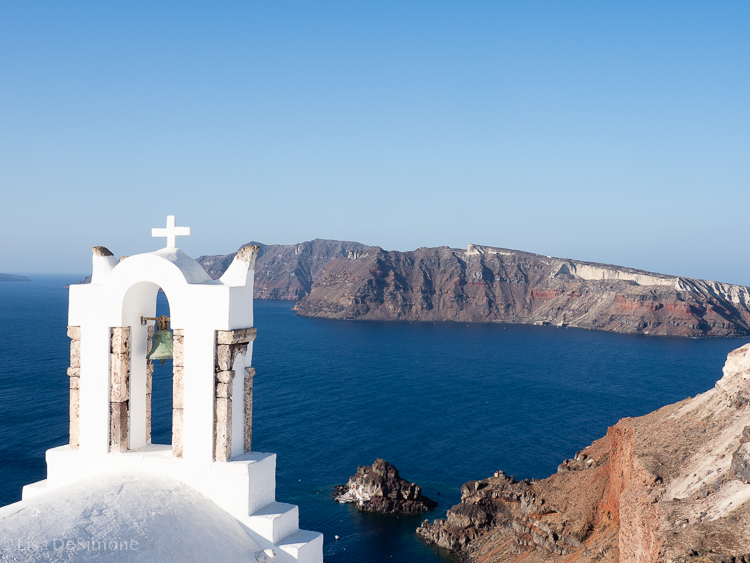
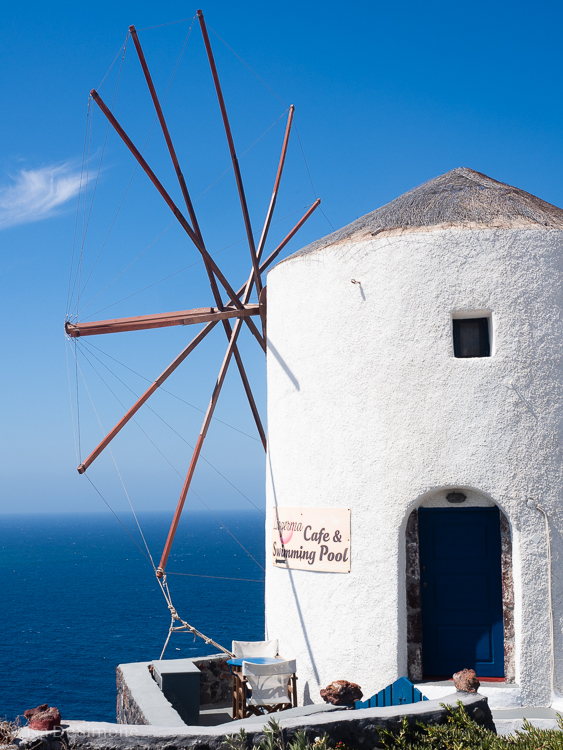
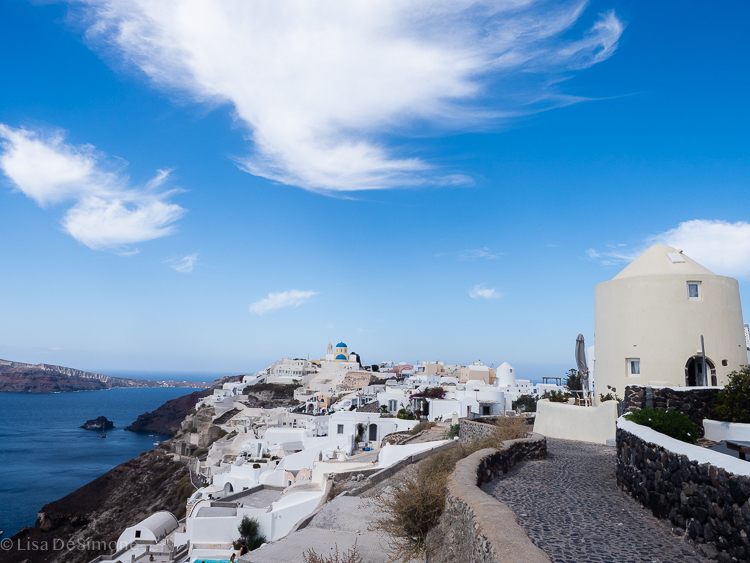
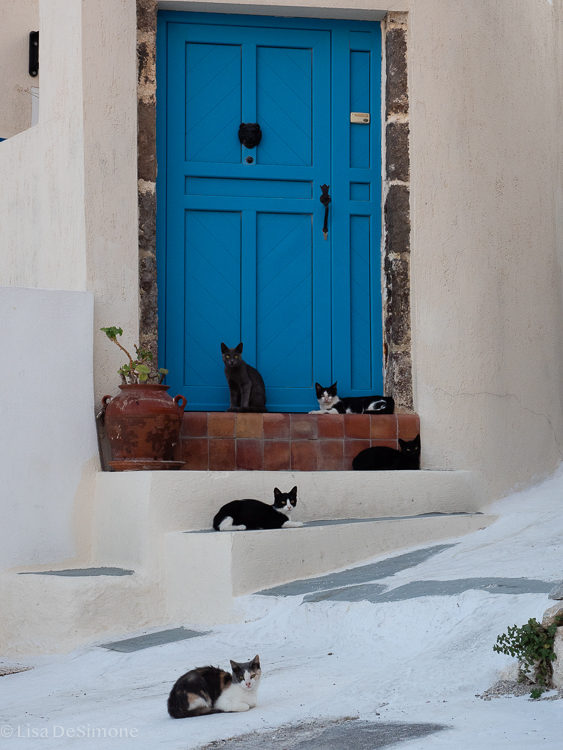
Crete in general - I was underwhelmed
Crete is the largest of the Greek islands (approximately 250 km, or 155 miles long) - and it definitely has a more rugged feel than the other Greek islands I visited. There were lots of hills and it was very green on Crete, but it had a more “gritty” vibe and I missed the blue domed churches and whitewashed villages that I grew to love.
There are lots of hills on the island of Crete
I stayed in the towns of Rethymno and Chania while on Crete (Chania was a cute harbor town with loads of shops, restaurants and boats for hire, and I enjoyed it more than Rethymno.) There are lots of stunning beaches as well. Having a rental car is critical on Crete, as the island is big and there doesn’t seem to be a well established public transportation system - or at least one that I was willing to learn and try to negotiate :-).
The port town of Chania, Crete
The highlight of my time on Crete was the 16 km hike through the Samaria Gorge, the longest gorge in Europe. Located in Crete’s only national park, the hike starts at over 4,100 ft and climbs down to sea level. (For the record, a downhill hike is just as challenging as an uphill hike, especially when you aren’t wearing the right shoes - sporting Converse for a 10 mile hike entirely on rocks is not something I’d recommend!) The hike ends in the town of Agia Roumeli, where I took the opportunity to soak my tired feet in the crystal clear blue waters of the Libyan Sea!
On my final day on Crete, I stopped at Knossos before heading to the airport. The largest Bronze Age archaeological site on Crete and what has been called Europe's oldest city, I have to admit I was underwhelmed by Knossos. It’s a large complex: much of it is in ruins and the signs that are around aren’t very informative. The rest of the site has been reconstructed and looks somewhat “fake” (much has been rebuilt with big chunks of cement). I was excited to go to and was let down when I got there...which more or less describes my feelings overall about Crete.
Because the truth is … I didn’t love Crete. Don’t get me wrong, I didn’t dislike it, I just felt let down. Based on what I read in advance and all the people who said “oh Crete...I heard it’s great” - I had high hopes. Yes, the beaches are beautiful, hiking the gorge was fun, and the port cities of Chania and Rethymno are nice...but I was expecting to be wowed and instead I felt disappointed. If someone told me they planned to go to Crete I wouldn’t dissuade them. However, if they were looking for amazing food, wonderful archeological sites, stunning beaches and gorgeous towns, I would tell them to go to Sicily. Head to head, Sicily would win in my book.
MY “PINCH ME” MOMENTS IN GREECE
*** Standing in front of the Parthenon for the first time ***
The temple of Athena - the Parthenon - in Athens. It’s near impossible to get a photo without people and/or repairation equipment!
*** Driving an ATV on Milos!!! The most fun I’ve had exploring a place in a long time ***
*** Snorkeling through caves off of Milos. Perfection! ***
THE DETAILS
MY ITINERARY
Athens: 3 nights - flight to Paros
Paros: 5 nights in village of Parikia - flight to Milos
Milos: 4 nights in village of Pollonia - ferry to Santorini
Santorini: 2 nights in village of Imerovigli - ferry to Crete
Crete: 3 nights in the town of Rethymno, 2 nights in the town of Chania - flight to Athens
ATHENS
Tip: Before I left the U.S., I downloaded three of Rick Steve’s free self-guided walking tours for Athens: Acropolis, Ancient Agora and Athens City Walk. I really enjoyed having these to guide me, that way I didn’t need to join a tour or hire a private guide, but I still learned a lot.
STAY:
I stayed at The Herodion Hotel: average room, average breakfast, soft beds, PRIME location
EAT:
Krinos for loukoumades (light, fluffy donuts fried to order and served with honey and cinnamon)
Kalamaki Bar for barley rusk, which was basically a hard barely bread, topped with amazingly fresh tomatoes (a constant everywhere in Greece), olives, olive oil and oregano, then piled high with feta cheese.
Skoubri - a short walk from the hotel and located on a pedestrian walk lined with other cafes and restaurants. Known for their seafood. Very good sea bass filet
O Thanasis - never would have chosen this place because it was right on a pedestrian street lined with restaurants and a Starbucks. Recommended by a food blogger. Very good gyro and greek salad.
Tailor Made Roastery: very good coffee, free wifi, cute spot to take a break
SEE:
The Acropolis - obviously!!! TIP: Get there as early as possible. I arrived at 8:15 am and there was no one in the ticket line. Depending on the amount of sightseeing you plan to do, I suggest researching the Athens City Pass
Ancient Agora - arrive early here as well.
Acropolis Museum - literally next door to the hotel. Modern museum that provides a wonderful history of ancient Greece, and contains many wonderful reliefs and statues from the Acropolis (along with some replicas). Worth the $$ (free entry with the Athens City Pass) and is a good way to spend a few hours if the heats gets to be too much
Changing of the guard at the Parliament Building
Temple of Zeus
Hadrian’s Arch
Plaka neighborhood
PAROS
STAY:
I stayed at an AirBnB in the village of Parikia. Message me if you want the exact listing. Highly recommend staying in Parikia. Great to walk around at any time of day.
DRIVE:
I organized a car rental on arrival. There are many rental places right at the port. I used Sardis Rental and since I was traveling alone I was able to get a small Smart Car. Shop around for the best price. I learned that most things in Greece are better done with cash.
EAT:
Symposium Cafe, Dispato and Rodi Cafe in Parikia for breakfast.
Levantis Restaurant in Parikia - excellent service and high end food on a lovely, quiet terrace
Vanilla gelateria in Parikia for a treat
Ramnos - coffee with a view in Lefkes
Kiranos Cafe in Naoussa for breakfast
Piatsa Estatorio in Naoussa for lovely fish
Christiana restaurant - seafood overlooking the sea
SEE:
There are only three main “towns” on Paros: Paroikia, Noussa, and Lefkes. Visit all of them - and multiple times if you can. They are each unique, quaint and very lovely, and have a different vibe in the morning versus the evening. Afternoons are meant to go to the beach!
Speaking of beaches..there are so many beaches it’s hard to name them all. Get a map with your rental car and just drive, pulling off whenever you see a sign! The ones that I would recommend:
Paros Park: found a gorgeous beach here in a natural cove and a blue domed monastery built right into the rocks
Piso Livadi and Aliki fishing port town
Tsoukalia
Ambelas
Molos beach
Golden Beach - this beach had the widest stretch of beach i’ve seen, very much like beaches in the US
Tao Retreat - yoga retreat and spa. Had some deep tissue work done (very good) and lunch at their thai restaurants (just okay)
MILOS
STAY:
I stayed at Pollonia Suites in the village of Pollonia. It’s a full service apartment, as opposed to an AirBnB. Mine was very large, comfy bed, large bathroom, big common area where more people could potentially sleep, and a small but functional kitchen. Elena at the front desk was super helpful before and during my stay. If I went again, I would stay in the village of Plaka.
DRIVE:
I organized an ATV rental through the hotel in advance. It was seriously the best thing I could have done. Really easy to learn and so, so, so fun!
EAT:
Medusa - Hanging octopus and tables on the water’s edge. A must in Milos!
Utopia Cafe in Plaka for sunset
Sirocco Restaurant on the beach
Jordan’s in Pollonia for great souvlaki
Kivotos ton Gefseon - absolutely amazing bakery in Pollonia
SEE:
There are only a few main “towns” on Milos: Pollonia, Plaka and Adamas. Similar to what I wrote about for Paros, each is unique and deserve a visit.
Beautiful beaches are the main reason people visit Milos. As you drive around, you are constantly surprised that one could be more fabulous than the next. Some have loungers which you can rent for the day, while others are completely devoid of services, so it’s best to bring a towel or blanket. The beaches that I would recommend are:
Sarakiniko: the most famous beach on the island, with a landscape that looks like the moon.
Alogomandra
Papafragas
Plathiena
Mandrakia - beach where Medusa restaurant is located
Fyropotamos
Paliochori - beach where Sirocco restaurant is located
Tsigrado
Fyriplaka
Boat tour - Milos is one of those islands that is really impressive to see from the water and a must-do is snorkeling through the caves in Kleftiko. I did a half day boat tour with Zephyros. I messaged them a few days in advance on FB to reserve my spot. They are one of the only boats that does a half day cruise. Beach towels are not provided, they do have snorkel masks and life jackets for you to use free of charge. The water clarity was incredible.
Tripiti area - This little area holds a lot of fun stuff. A surprise for me on Milos were the wonderfully picturesque little fishing villages scattered all around the island. Klima is definitely worth visiting to see the “syrmata” (fishermen houses that are carved into the rocks and have bright coloured wooden doors.) Very nearby Klima you can find well preserved 1st-century AD catacombs, including the place where the Venus de Milo was discovered. There is also a Roman theatre with an amazing view over the Aegean sea.
SANTORINI
STAY:
I stayed at Above Blue Suites in the village of Imerovigli. Accommodations in Santorini can be terribly expensive for a solo traveler, and while this was on the pricey side, it was a better value than other cliffside resorts and was my splurge for the trip. The hotel was fantastic - they served me breakfast on my own private terrace every morning! I highly recommend Imerovigli as the town to stay.
DRIVE:
I didn’t rent a car or ATV on Santorini. I used taxis, walked or took the public bus.
EAT:
There are many fabulous places to eat in Santorini and it’s imperative to make a reservation if you want to eat somewhere with a sunset view. My schedule was very fluid, so I didn’t make any reservations. I ate several meals at a restaurant close to my hotel in Imerovigli called Avocado, which was very good. Another restaurant recommended by my hotel in Thira, Onar, was excellent and served an amazing grilled octopus.
SEE:
There isn’t anything I necessarily recommend doing in Santorini. I spent most of my time relaxing on Santorini. The island is known more for it’s views and shopping, and is not a greek island famous for its beaches - plus I had just experienced some of the most amazing beaches on Milos and Paros. That said, I do recommend the Fira-Oia Hike. It was one of the highlights of my time in Santorini, as it takes you along the caldera cliff and through the villages of Fira, Firostefani, Imerovigli, and Oia. I recommend starting early in the morning, as it should take between 2 - 3 hours and will be hot during the day. The hiking trail from Fira to Oia is just under 10.5km (6.5 miles). Part of the path is similar to a sidewalk, parts are cobblestone, and parts are a dirt path.
CRETE
As I discussed above, I didn’t love Crete and didn’t take great notes while I was there…I don’t recall any truly memorable meals - or maybe I was just tired :-(
STAY:
I stayed at Palazzo Vecchio in Rethymno. This hotel was situated in a good location for walking around the town, and had a parking lot directly across the street. I wasn’t that impressed with Rethymno and if I had to do it all again, I would stay for 2 nights instead of three.
In Chania, I stayed at Porto Veneziano which was a nice, more modern hotel in an ideal location right at the Old Venetian Harbor. I really enjoyed this hotel, and Chania in general. It was nice to walk along the harbor in the morning and to get lost in the back streets.
DRIVE:
I organized a car rental in advance from Easy Auto, as I needed an automatic transmission (not easy to find). I picked up the car at the port in Heraklion and dropped it off at the airport. I spent a lot of time driving around the central and west of the island / I didn’t explore the east.
SEE:
Samaria Gorge - The highlight of my time in Crete was the hike through the Samaria Gorge, the longest gorge in Europe located in Crete’s only national park. The hike starts at over 4,100 ft and climbs down to sea level. Hiking the gorge is pretty popular, and is something that you really need to organize in advance. Most people take a bus from Chania to the start of the hike. The hike ends in a completely different place and involves a boat ride to your waiting bus, which then takes you back to Chania. It’s an all day event! Because of the different start and end points, if you want to do the entire hike I do not think you can drive there yourself. My hotel organized the hike for me.
Luckily our bus was the first to arrive and we hit the trail by 7:45 am. Even though a bus load of us started at the same time, everyone hiked at their own pace so we spread out pretty quickly and the trail never felt crowded. It was nice to walk in the shade of pine trees for most of the first part, after spending so much time in the sun the past few weeks.
The walk along the gorge bottom is beautiful as well. The area known as the “Gates” are where the sheer walls of the gorge soar upwards towards the skies and the floor narrows, in one section to a width of only a few feet. The trail crisscrosses a small river multiple times, where the water is crystal clear and safe to drink
The hike ends in the town of Agia Roumeli, where you can soak in the crystal clear blue waters of the Libyan Sea, get a bite to eat, or just relax until it’s time to catch the bus back to Chania.































































